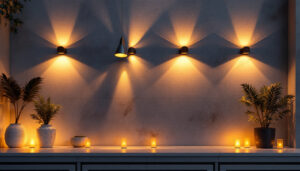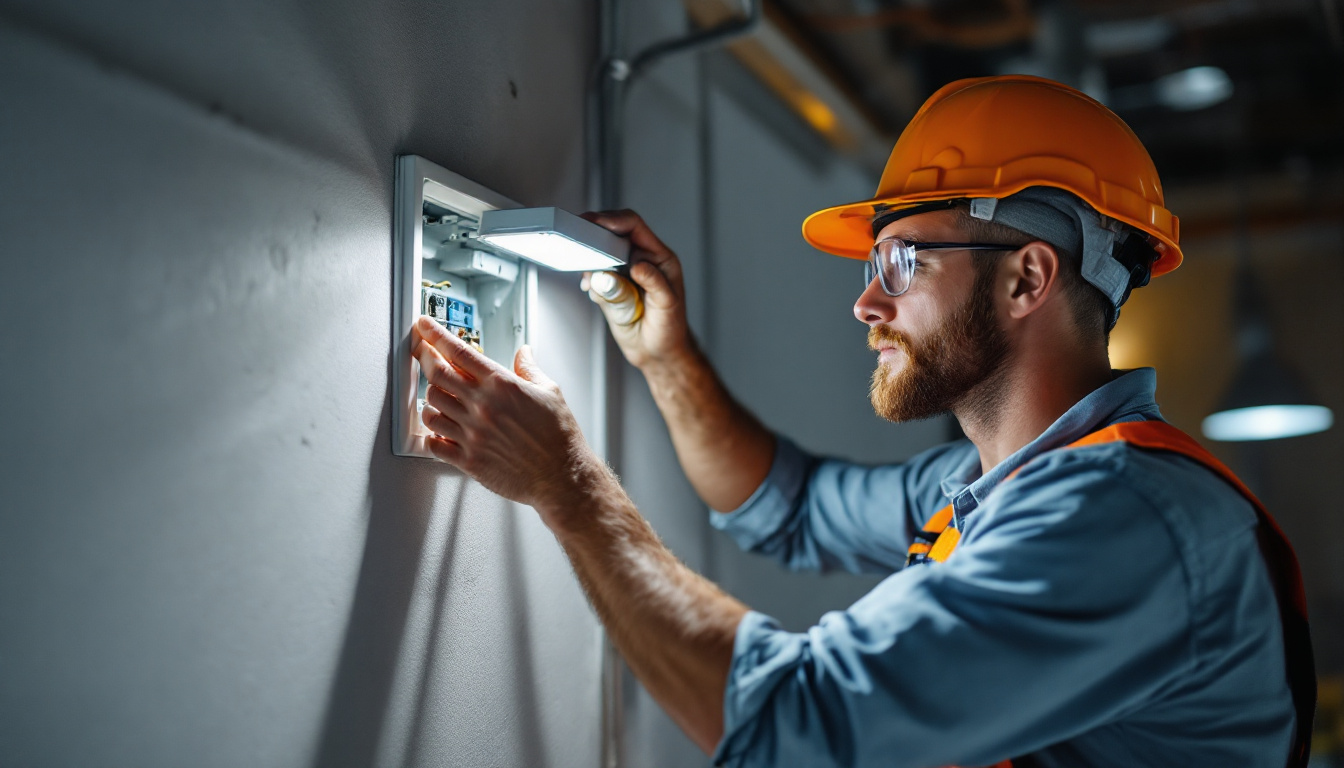

In the world of electrical installations, the details matter immensely. One often overlooked detail is the electric box cover. While it may seem like a minor component, the choice of electric box cover can significantly impact safety, functionality, and aesthetics. For lighting contractors, understanding the nuances of electric box covers is essential to avoid common pitfalls and ensure a successful installation.
Electric box covers serve as protective barriers for electrical boxes, which house wiring connections and electrical components. These covers come in various materials, shapes, and sizes, each designed for specific applications. Selecting the right cover is crucial not only for safety but also for compliance with local codes and regulations. Properly installed electric box covers can prevent accidental contact with live wires, reducing the risk of electrical shocks and fires, making them an essential component in any electrical installation.
Electric box covers can be categorized based on their design and intended use. Common types include:
Understanding the differences between these types is essential for selecting the appropriate cover for each installation scenario. For instance, while standard covers may suffice for indoor outlets, outdoor installations require weatherproof covers to withstand rain, snow, and extreme temperatures. Additionally, GFCI covers not only safeguard the electrical components but also enhance user safety, especially in areas prone to water exposure, such as kitchens and bathrooms.
The material of the electric box cover plays a significant role in its performance and durability. Common materials include:
Choosing the right material is crucial to ensure longevity and reliability in various environments. For example, while plastic covers may be adequate for dry indoor spaces, they may not hold up well in humid or outdoor conditions where metal or composite covers would be more appropriate. Furthermore, the choice of material can also affect the aesthetic appeal of the installation; sleek metal covers can lend a modern look, while colored plastic options can blend seamlessly with interior decor. Understanding these nuances can help homeowners and electricians alike make informed decisions that enhance both safety and design.
Even experienced lighting contractors can fall victim to common mistakes when it comes to electric box covers. Being aware of these pitfalls can save time, money, and ensure a safer installation.
One of the most significant mistakes a contractor can make is ignoring local electrical codes and regulations. Each area may have specific requirements regarding the types of covers that can be used, especially in outdoor or wet locations. Failing to comply with these codes can lead to fines, rework, and safety hazards.
Before starting any project, it is essential to familiarize oneself with local codes and ensure that the selected electric box covers meet these standards. This diligence not only protects the contractor but also ensures the safety of the end user. Additionally, staying updated on any changes to these regulations can prevent future complications, as codes can be revised to reflect new safety standards or technological advancements.
Another common pitfall is selecting the wrong size cover for the electrical box. A cover that is too small may not provide adequate protection, while one that is too large can lead to installation challenges and an unprofessional appearance. It’s crucial to measure the electrical box accurately and choose a cover that fits snugly.
Using adjustable covers can sometimes mitigate this issue, but it’s still essential to ensure that the cover aligns with the box size specifications to maintain safety and functionality. Furthermore, contractors should also consider the depth of the box when selecting a cover, as this can significantly affect the overall fit and performance. A well-fitted cover not only enhances safety but also contributes to the longevity of the electrical components housed within.
While functionality and safety are paramount, aesthetics should not be overlooked. The appearance of electric box covers can impact the overall look of a space, especially in residential or commercial settings where design matters. Choosing covers that complement the surrounding decor can enhance the visual appeal of the installation.
Contractors should consider the color, finish, and style of the cover in relation to the lighting fixtures and overall design scheme. This attention to detail can elevate the quality of the installation and leave a lasting impression on clients. Additionally, incorporating design elements that reflect current trends can further enhance the project’s appeal. For instance, using sleek, modern covers in contemporary spaces or opting for vintage-inspired designs in rustic settings can create a cohesive look that resonates with the intended aesthetic. By marrying functionality with style, contractors can ensure that their installations not only perform well but also contribute positively to the environment in which they are placed.
To ensure a successful installation of electric box covers, following best practices is essential. These practices not only enhance safety but also improve the overall quality of the work performed. A well-executed installation can significantly extend the lifespan of the electrical components housed within, ultimately saving time and resources in the long run.
For outdoor installations, proper sealing is crucial to prevent moisture ingress. Using weatherproof covers is a good start, but ensuring that all seams and edges are sealed correctly is equally important. Utilizing silicone sealant or gaskets can help create a watertight barrier, protecting the electrical components inside the box. Additionally, it’s advisable to choose sealants that are specifically designed for electrical applications, as they can offer superior adhesion and durability against environmental factors.
Contractors should also check for any gaps or cracks during installation and address them promptly to maintain the integrity of the installation. Furthermore, considering the local climate conditions can influence the choice of materials and sealing methods. For example, in areas prone to heavy rainfall or snow, selecting covers with enhanced drainage features can further mitigate the risk of water accumulation and subsequent damage.
Once the installation is complete, regular maintenance checks should be scheduled to ensure the covers remain in good condition. Inspecting for signs of wear, damage, or corrosion can help identify potential issues before they escalate into significant problems. During these checks, it’s beneficial to clean the covers and surrounding areas to remove any debris or buildup that could interfere with their functionality.
Encouraging clients to report any concerns regarding the electric box covers can also foster a good relationship and demonstrate a commitment to quality service. Providing them with a checklist of items to monitor can empower clients to take an active role in maintenance. This could include checking for discoloration, ensuring that the covers are securely fastened, and monitoring for any unusual sounds or smells that may indicate electrical issues. By promoting proactive maintenance, contractors can help clients feel more confident in the safety and reliability of their electrical systems.
As technology advances, so do the materials and designs of electric box covers. Staying informed about the latest innovations can provide contractors with additional options and improve the quality of their installations.
With the rise of smart home technology, electric box covers are also evolving. Smart covers can integrate with home automation systems, providing features such as remote monitoring and control. These innovations can enhance safety and convenience for homeowners, making them an attractive option for contractors to offer.
Understanding how to install and integrate these smart covers can set a contractor apart in a competitive market, appealing to tech-savvy clients. Furthermore, many smart covers come equipped with advanced features such as built-in sensors that can detect overheating or unusual electrical activity. This proactive approach to safety not only protects the home but also provides peace of mind to homeowners, knowing that their electrical systems are being monitored in real-time. As these technologies continue to improve, contractors can leverage their knowledge of smart covers to position themselves as experts in modern electrical solutions.
As sustainability becomes a priority for many consumers, eco-friendly electric box covers are gaining popularity. Made from recycled materials or designed for easy recyclability, these covers appeal to environmentally conscious clients.
Contractors who offer eco-friendly options demonstrate a commitment to sustainability, which can enhance their reputation and attract a broader client base. Additionally, the production of these covers often involves lower carbon emissions, making them a responsible choice for both contractors and homeowners. Some manufacturers are even exploring bioplastics and other innovative materials that not only reduce environmental impact but also provide durability and resistance to wear and tear. By incorporating eco-friendly electric box covers into their offerings, contractors can not only meet the growing demand for sustainable products but also contribute to a greener future, fostering a sense of community responsibility among their clientele.
Electric box covers may seem like a small detail in the grand scheme of electrical installations, but their importance cannot be overstated. By understanding the different types, avoiding common pitfalls, and following best practices, lighting contractors can ensure safe, functional, and aesthetically pleasing installations.
Staying informed about innovations in electric box covers can further enhance a contractor’s offerings, providing clients with cutting-edge solutions that meet their needs. Ultimately, attention to detail in every aspect of the installation process will lead to greater client satisfaction and long-term success in the industry.
Ready to elevate your lighting installations with the highest quality electric box covers? Look no further than LumenWholesale. We provide contractors with spec-grade lighting products that meet the highest industry standards, ensuring safety, functionality, and design excellence for every project. Take advantage of our unbeatable wholesale prices, free shipping, and the convenience of cutting out the middleman. Make your next purchase hassle-free and cost-effective. Wholesale Lighting at the Best Value is just a click away. Experience the LumenWholesale difference today!

Discover how LED ceiling can lights are revolutionizing the lighting industry and offering new opportunities for contractors.

Illuminate your outdoor spaces with confidence using our comprehensive guide on exterior flood lights.

Discover how LED spotlights for stairs can revolutionize lighting projects for contractors by enhancing efficiency, reducing energy costs, and providing superior illumination.

Discover why lighting contractors should prioritize outdoor walkway lights in their projects.
Get notified when NEW deals are released.
Optimize your budget with wholesale discounts.
Only top-quality, specification-grade lighting products.
No additional costs at checkout - what you see is what you pay.
We understand the unique needs of contractors.